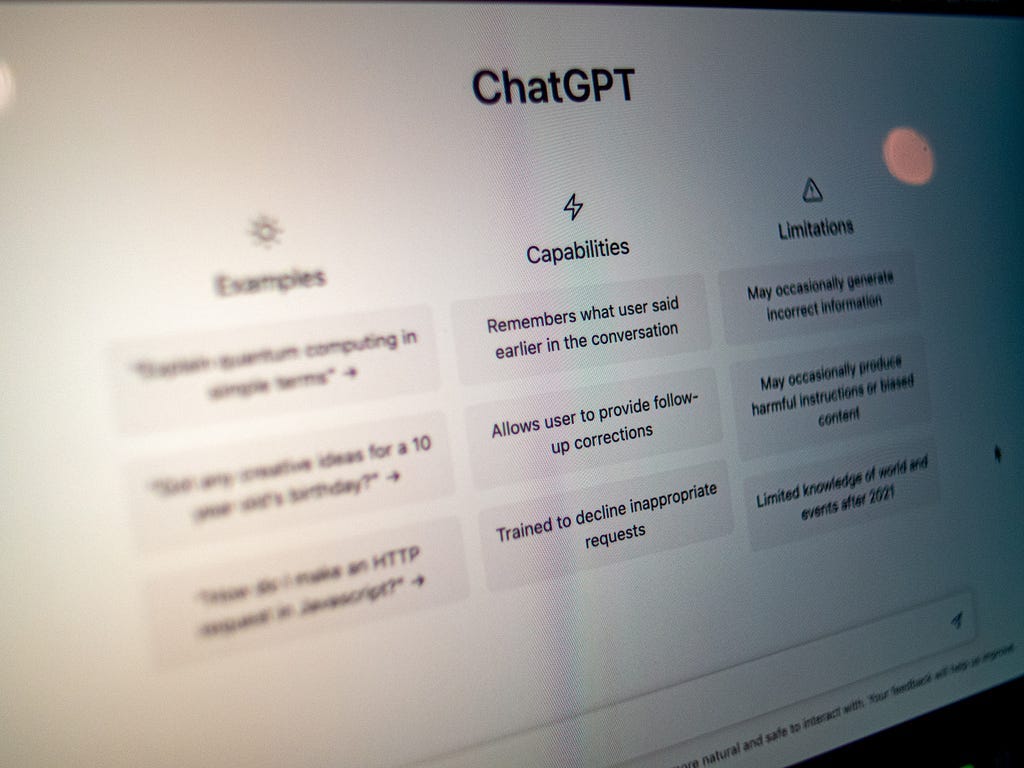How To Build a Chatbot
The Beginner’s Guide

Chatbots are the newest rage in the world of digital communication. With chatbots, you can create your personalized bot to chat with users, answer questions, and even sell products. But what exactly is a chatbot, and why are they so essential?
Writers can benefit from chatbots in a few ways:
Research: Chatbots can be programmed to provide information on various topics, which can be helpful for writers who need to do research for their writing projects. For example, a chatbot that provides information on a particular industry or topic can help writers quickly and easily gather the necessary information.
Inspiration: Chatbots can be designed to generate prompts or ideas for writers struggling with writer’s block. These prompts can be based on different genres, themes, or even specific writing challenges, helping writers overcome creative hurdles and develop new ideas.
Feedback: Chatbots can be a tool for writers to receive feedback on their writing. For example, a chatbot specializing in language and grammar can help writers identify and correct writing errors. In contrast, a chatbot specializing in storytelling can provide feedback on the structure and pacing of a story.
Engagement: Chatbots can be used to engage with readers and promote a writer’s work. For example, a chatbot can be designed to share information about a writer’s latest book or to provide updates on their writing projects. This can help to build a writer’s audience and increase their exposure to potential readers.
Overall, chatbots can be a valuable tool for writers, providing them with access to information, inspiration, feedback, and engagement that can help them to improve their craft and connect with their readers.
In Matt Schlicht’s “The Complete Beginners Guide To Chatbots,” he explains everything you need to know about a chatbot and its function.
The Complete Beginner’s Guide To Chatbots
A chatbot is a computer program designed to simulate conversation with human users, typically over the internet. They are essential because they help businesses automate their customer service, marketing, and sales efforts. Chatbots are efficient and cost-effective ways to engage with customers, provide support, and drive conversions.
Jesús Martín also explains what makes a chatbot a chatbot in his article “Design Framework for Chatbots.”
But enough about why chatbots are essential. Let’s get down to the nitty-gritty of creating your chatbot!
Step 1
Define Your Chatbot’s Purpose
Before you start building your chatbot, you must define its purpose. What do you want your chatbot to do? Here are some examples of chatbot purposes:
Answer customer questions
Provide product recommendations
Schedule appointments
Facilitate transactions
Entertain users with jokes, games, or quizzes
Step 2
Choose a Chatbot-Building Platform
Once you’ve defined your chatbot’s purpose, you need to choose a chatbot-building platform. There are many options out there, but here are some popular ones:
Dialogflow
Chatfuel
ManyChat
IBM Watson Assistant
Step 3
Design Your Chatbot’s Conversational Flow
Now that you’ve chosen a chatbot-building platform, it’s time to design your chatbot’s conversational flow. First, you must determine what questions your chatbot will ask, what answers it will give, and how it will respond to different scenarios.
For example
If your chatbot is designed to answer customer questions, you must consider the different questions customers might ask and how your chatbot will respond. For example, will your chatbot answer straightforwardly or ask follow-up questions to clarify the customer’s needs?
Step 4
Add Artificial Intelligence (AI) Features
You must add artificial intelligence (AI) features to make your chatbot more innovative and responsive. AI allows your chatbot to understand natural language and context, making it easier for users to communicate with your chatbot.
For example
If a user types “I want to buy a new pair of shoes,” your chatbot should understand that the user is interested in purchasing shoes and respond accordingly.
Step 5
Test Your Chatbot
Once you’ve built your chatbot, it’s time to test it. First, ensure your chatbot can handle different scenarios and provide accurate answers.
Here are some things to test:
Does your chatbot understand natural language?
Does your chatbot give accurate answers?
Does your chatbot respond appropriately to different scenarios?
Step 6
Launch Your Chatbot
Finally, it’s time to launch it. You can integrate your chatbot with different messaging platforms, such as Facebook Messenger or Slack, to make it easier for users to chat with your chatbot.
Want to build your chatbot? Here’s a video from atomic14 on YouTube that gives a step-by-step process for creating your chatbot.
Congratulations, you’ve built your chatbot! Now sit back and watch your chatbot engage with your customers and drive conversions.
In conclusion
Chatbots are essential in today’s digital landscape. They can help businesses automate customer service, marketing, and sales efforts. By following the six steps outlined above, you can create your chatbot and reap the benefits of this innovative technology.
Congrats! You made it to the end!
My name is Petunia Petals and I write about different ways to optimize your time and website. If that interests you, give me a clap, comment, or follow.


